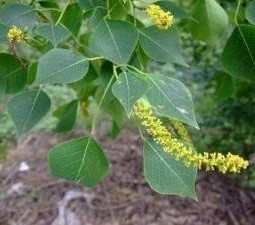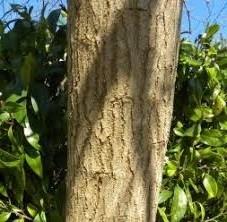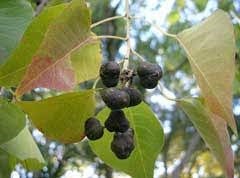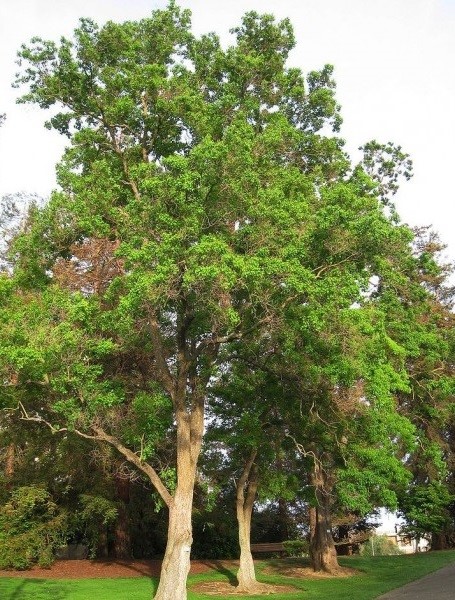Trees
Sapium sebiferum (L.) Roxb.
Sapium sebiferum (L.) Roxb.
Description :
A small-sized deciduous tree 6 to 12 m tall with a diameter of 0.2 to
0.3 m. The crown may range from low spreading and multi-forked to slender
columnar with small pendant branches. The leaves are simple, heart-shaped and 2
to 7.5 cm across. The bark is rough and light grey. It can be monecious but in
some cases the flowers have both male and female parts. The yellow flowers
occur in small, drooping bunches 5 to 20 cm long. The flowers occur between May
and October. The fruit is a capsule, and the fruiting period is between
November and January. It has no known insect or disease problems. It is
reproduced both from seed and by vegetative means. A moderately fast-growing
tree, it has been reported to have a diameter growth MAI of 0.85 cm. In a
plantation it is reported to have produced 22 m3/ha/yr over a 4 year
period. Grains are straight to rather deeply interlocked to wavy, weak and soft
having specific gravity of 0.5 and a calorific value of 4100 kcal/kg.
Distribution :
The tree is native to China and Japan. In Pakistan it is planted in the
plains and in gardens. Grows naturally along stream beds in Abbottabad. Used
extensively in Islamabad for landscaping. An intolerant tree that grows on a
variety of soils, including wet and saline sites. It can be successfully grown
on alkaline or poor soils. It requires a precipitation zone of 500 to 1.200
mm/yr or more. It prefers a sub-humid to semi-arid, cool-warm sub-tropical
monsoon climate with a temperature range of -10 to 40°C, up to an elevation of
1200 m.
Uses :
It
is frost hardy and coppices readily. This is a potentially useful tree in farm
forestry programs. It can also be planted in watershed areas to help control
erosion. Fuel, candles and soap (from wax on seed coat) ornamental, erosion
control, apiculture, and crates and boxes.



